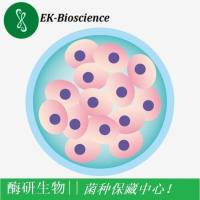Alternatives to Mammalian Pain Models 1: Use of C. elegans for the Study of Volatile Anesthetics
互联网
互联网
相关产品推荐

碳纳米管水分散剂;308068-56-6;≥90%, Not volatile;V32520-100g
¥617

神经性疼痛和炎症miScript miRNAs PCR Array Pain: Neuropathic & Inflammatory miScript miRNAs PCR Array
询价

灰色链霉菌/灰色链霉菌/IMAS Study Class M4.3
¥1500

PREB/PREB蛋白/Mammalian guanine nucleotide exchange factor mSec12蛋白/Recombinant Human Prolactin regulatory element-binding protein (PREB), partial重组蛋白
¥69

Recombinant-Thylamys-elegans-NADH-ubiquinone-oxidoreductase-chain-4LMT-ND4LNADH-ubiquinone oxidoreductase chain 4L EC= 1.6.5.3 Alternative name(s): NADH dehydrogenase subunit 4L
¥9646
相关问答

